Chris Berdik's Blog
June 3, 2014
Tonle Sap (Part Two)

This is the second installment from my reporting trip to Cambodia's Lake Tonle Sap. Part One featured two audio slideshows about the project. The slideshows and the stories posted originally appeared online at the Pulitzer Center for Crisis Reporting, which funded my trip.
Click the link below to read about water's role in the rise, fall, and renewal of Angkor Wat.
Cambodia: Lessons from the Past | Pulitzer Center
Click the link below to read a short profile of one Tonle Sap fisherman.
Cambodia: Uncertain Future for Fishermen | Pulitzer Center
For all the entries, visit the project page at the Pulitzer Center's site.
Published on June 03, 2014 07:32
June 2, 2014
Tonle Sap (Part One)
In late January and early February 2014, I traveled to Cambodia for two and a half weeks, thanks to a grant from the Pulitzer Center on Crisis Reporting. My reporting partner was video journalist and recent Pulitzer Center hire, Steve Sapienza. Together, we followed scientists and fishermen working on Cambodia's great lake, the Tonle Sap. Steve and I have several pieces coming out in June and July based on this reporting--in the New York Times (scheduled June 10), on PBS Newshour (about a week later, stay tuned), and in the Virginia Quarterly Review (summer issue, out July 1). Fair warning: they all cover the same story in different ways. Here are two audio slideshows originally posted on our project page within the Pulitzer Center's website.
In Part Two, I will post a story about water's critical role in the rise, fall, and renewal of Angkor Wat, and a short profile of a Tonle Sap fisherman.
In Part Two, I will post a story about water's critical role in the rise, fall, and renewal of Angkor Wat, and a short profile of a Tonle Sap fisherman.
Published on June 02, 2014 06:29
April 17, 2013
The Smell Summit (cinnamon buns, jelly beans, and death)
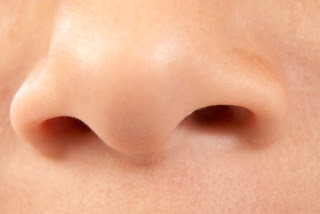 Today, the world's top odor scientists are gathering in Huntington Beach, California (Orange County) for the 35th annual meeting of the Association for Chemoreception Sciences. When odor researchers get together, they often talk about flavor, and so it is no surprise that the conference is sponsored by Pepsico, which owns Pepsi, Frito Lay, Tropicana, Quaker, and Gatorade. The other top sponsor is probably less well known, except among food scientists -- Givaudan, the Swiss flavor and fragrance concocters, in whose labs the hundreds of chemical odor compounds that mingle in every flavor are dissected, analyzed, and recombined intro wondrous new combinations (like a picanha*-flavored potato chip).
Today, the world's top odor scientists are gathering in Huntington Beach, California (Orange County) for the 35th annual meeting of the Association for Chemoreception Sciences. When odor researchers get together, they often talk about flavor, and so it is no surprise that the conference is sponsored by Pepsico, which owns Pepsi, Frito Lay, Tropicana, Quaker, and Gatorade. The other top sponsor is probably less well known, except among food scientists -- Givaudan, the Swiss flavor and fragrance concocters, in whose labs the hundreds of chemical odor compounds that mingle in every flavor are dissected, analyzed, and recombined intro wondrous new combinations (like a picanha*-flavored potato chip).In chapter four of Mind Over Mind, "Accounting for Taste," I write about how the odor of food and drink wraps our sense of taste and our taste preferences in layers of expectations and emotional associations. Much of the research to be presented at the smell-science meeting speaks to effects of different smells on the brain and the impacts of cognitive impairment, such as Alzheimer's and autism, on smell and taste. One panel discussion focuses on how different tastes signal the production of gut peptides that regulate how hungry we feel and how much we subsequently eat. And then there are the more esoteric topics, which I share here for your reading pleasure:
"The Effects of Aroma of Baked Cinnamon Bun on Stability"; "Tests of Retronasal Smell in Children: Which Flavored Jelly Bean Works Best?"; "Temperature of Served Water Can Influence Sensory Perception and Acceptance of Subsequent Food."
And my favorite, due to its creepiness: "Three-Minute Smell Test Predicts Risk of Death" in which University of Chicago researchers measured the sense of smell of about 3,000 older people and then followed up with them for five years. Independent of major mortality risk factors such as smoking or disease, the people with a poor sense of smell were three times more likely to be dead in five years than those with a normal sense of smell. Sniff.
*picanha is a Brazilian term for a fatty, salty morsel of grilled beef
Published on April 17, 2013 06:44
March 15, 2013
Wait!
 Today's topic is delay.....
Today's topic is delay.....Two recent studies from the journal Psychological Science offer surprising insights into when and why our brains say, "not so fast."
The first one, from researchers at USC's Marshall School of Business, suggests that power makes people more willing to say no to a cash offered right now, if it means they can get more money later. The behavior under study is called "temporal discounting" -- the tendency for people to prefer a smaller reward to a larger one, if that means they get it now instead of waiting (beyond the point where inflation, etc would wash out any difference in real value) -- we shortchange our future selves. In four experiments, these researchers showed that giving people a temporary boost in power (making them the "boss" in a group activity) made them more willing to wait for more money.
Crazy, right? Doesn't power override inhibitions and whet one's appetite for risk? Yes, say the study's authors, but it also seems to increase people's affinity with their future selves. For one thing, they write, "Power engenders a sense of control and optimism, reducing the uncertainty associated with the future [which is] one of the causes of temporal discounting." Indeed, the effect of power on reward choice was mediated by how close people reported feeling to their future selves in a questionnaire. In a survey study done outside the lab, people who reported feeling more powerful in their daily lives also reported saving a lot more for retirement, even controlling for factors such as income. age, and education.
The second study, by a group of British researchers, finds a mind-body link in inhibitions. When offered a series of gambles, people were more risk averse when they were occasionally prompted to stop making a simple movement that was otherwise part of the experiment (i.e. pressing the spacebar after choosing their wager). It wasn't that people who stopped their thumbs from hitting the space bar stopped gambling altogether. "Occasional motor inhibition reduced monetary risk taking by approximately 10% to 15%," the researchers note. But, the results suggest a general inhibition system in the brain, and, more generally, that inhibition can be enhanced with practice.
Published on March 15, 2013 08:27
January 18, 2013
Did He Need to Cheat?
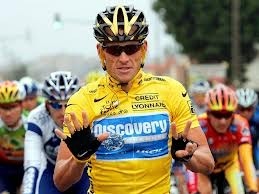
Lance Armstrong has finally admitted that he cheated his way to seven Tour de France titles. The confessional interview with Oprah Winfrey (part one last night and part two tonight) is big news, even if it's not exactly shocking.
Mostly, it's sad, of course. Sad that the sport of cycling has lost its biggest icon and its last "real" champion. Sad for the many people Armstrong lied to and lied about to protect his name. Sad for the overall message of inspiration he seemed to embody. And I'll add one more sad note: There are serious doubts now being raised about whether the effectiveness of all that Erythropoietin (EPO) that Armstrong and his fellow top-tier cyclists pumped into their blood.
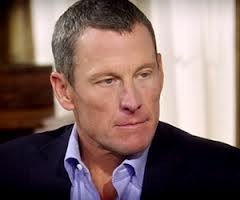 To be clear, EPO (a hormone that enhances the body's production of red blood cells) is not the only thing Armstrong injected to boost his performance. Other banned substances he admitted using include human growth hormone and testosterone. But EPO has become the illicit drug of choice for endurance athletes looking for an edge. That's because it is believed to increase the blood's ability to carry oxygen and thereby increase the athlete's aerobic power. Indeed, one recent review found that EPO boosts the maximum oxygen uptake by 6 to 9 percent. But does EPO really boost athletic performance? Not according to a 2012 meta-analysis of EPO studies published by the British Medical Journal, which found "no scientific basis to conclude [EPO] has performance enhancing properties in elite cyclists." For one thing, the study's authors pointed out that there are other measures that may be even more important to elite athletic perform, such as "lactate threshold" (the point when lactate production increases faster than it can be cleared by the body), that EPO has not been shown to improve. Plus, the hormone is also known to thicken the blood, making the heart work harder (this increase of blood viscosity also increases the risk of blood clots, heart attacks and strokes), which might work against endurance. Armstrong's reputation is in ruins. He's been stripped of his titles, banned from the sport to which he devoted his life, and shunned by the cancer charity Livestrong that he founded. All because he (and so many of his competitors) felt the need to cheat. Topping off this shame pile is the possibility that he and many others might have raced just as fast without EPO.
To be clear, EPO (a hormone that enhances the body's production of red blood cells) is not the only thing Armstrong injected to boost his performance. Other banned substances he admitted using include human growth hormone and testosterone. But EPO has become the illicit drug of choice for endurance athletes looking for an edge. That's because it is believed to increase the blood's ability to carry oxygen and thereby increase the athlete's aerobic power. Indeed, one recent review found that EPO boosts the maximum oxygen uptake by 6 to 9 percent. But does EPO really boost athletic performance? Not according to a 2012 meta-analysis of EPO studies published by the British Medical Journal, which found "no scientific basis to conclude [EPO] has performance enhancing properties in elite cyclists." For one thing, the study's authors pointed out that there are other measures that may be even more important to elite athletic perform, such as "lactate threshold" (the point when lactate production increases faster than it can be cleared by the body), that EPO has not been shown to improve. Plus, the hormone is also known to thicken the blood, making the heart work harder (this increase of blood viscosity also increases the risk of blood clots, heart attacks and strokes), which might work against endurance. Armstrong's reputation is in ruins. He's been stripped of his titles, banned from the sport to which he devoted his life, and shunned by the cancer charity Livestrong that he founded. All because he (and so many of his competitors) felt the need to cheat. Topping off this shame pile is the possibility that he and many others might have raced just as fast without EPO.
Published on January 18, 2013 08:23
December 21, 2012
Thanks! That Was a Blast!
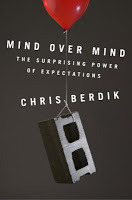 In a few days, I'll be pestering everybody about a forthcoming OpEd I wrote about New Year's resolutions and placebo willpower. First, I want to take a moment to step outside of this blog's theme and look back rather than forward.
In a few days, I'll be pestering everybody about a forthcoming OpEd I wrote about New Year's resolutions and placebo willpower. First, I want to take a moment to step outside of this blog's theme and look back rather than forward.In the fall of 2010, this book was, appropriately enough, nothing but expectations. If you're reading this blog, chances are that at some point in the following two years, I talked your ear off about what the book could be, or what it seemed to be becoming, or where it had ended up, for better or worse. Thanks for asking, listening, offering support, and giving me feedback. All of it mattered and helped shape the book. Most of all, thanks for reading!
Now, the book is done. A friend and fellow book author described the days before publication day as, "the calm before the calm." So it has been, but it's been thrilling nonetheless. With a new year is right around the corner, it's time to move on to new challenges. In 2013, this blog will still pay attention to expectations news and research, of course, but it may also start to move in a few different directions, too. Any and all ideas welcome!
Happy Holidays! I wish you a joyful new year!
Published on December 21, 2012 10:27
November 29, 2012
Placebos and Evolution: A Theory
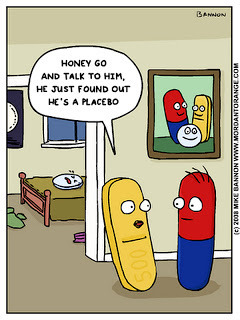 A few weeks ago, Nicholas Humphrey, the renowned British psychologist, emailed me with some of his thoughts on placebos and self healing.
A few weeks ago, Nicholas Humphrey, the renowned British psychologist, emailed me with some of his thoughts on placebos and self healing.Humphrey is one of the few researchers who dare to go beyond the IF and the HOW questions of placebo healing and delve into the WHY. Specifically, if humans are endowed with varied and powerful self-healing resources, why are these effects so conditional and reliable for some while nonexistent for others, and why do we seem to need "permission" from some third party (be it a pill, a doctor, or a sign from the heavens) to trigger our endogenous healing potential?
Over the years, Humphrey has put together a theory about all this -- an evolutionary tale, a story of ancient, cognitive reflexes, protective and essential in our cave days but overly-cautious in the modern world, coaxed with a bit of trickery. Along with the neurologist and evolutionary psychologist John Skoyles, Humphrey wrote a concise version of this theory in the September 2012 issue of Current Biology titled, "The Evolutionary Psychology of Healing: A Human Success Story."
It's a fascinating theory that Humphrey also describes in a podcast interview (his bit starts at 15:14). Before I offer my layman's summary, it's worth noting that Humphrey's family tree includes both the economist John Maynard Keynes and, most pertinent for this post, the physiologist A.V. Hill. It was Hill who first postulated the idea that there must be some kind of protective mechanism a "governor" either incorporated in the heart muscle or in the brain that could regulating fatigue in an exercising body to prevent us from exerting ourselves to death. The idea was largely ignored until the 1990s when the South African exercise physiologist Tim Noakes picked up and expanded on the concept, and began giving this "central governor" more empirical support. Accordingly, the central governor protects us by inducing fatigue, slowing us down, conserving our resources, based on an ongoing, forward-looking analysis of how much gas we have left in the tank and how much farther it is to the finish line.
Humphrey first points out that the benefits of our self-healing mechanisms (our immune systems, our natural wound healing, even our protective pain and our toxin-killing fevers) also have costs in terms of consuming energy and nutrients, and the opportunity costs of a day in bed. He proposes that in our cave days, these costs could loom very large indeed, and that a self-healing "governor" would take them into account and possibly hold the self-healing mechanisms back until the coast was clear, the days were warmer, and resources such as food were easier to come by.
The self-healing governor, though hardwired, could learn things, Humphrey says. It could learn about medicine, for instance, and become more generous and optimistic with healing resources under its spell, both the "directly curative" treatments and the "mumbo-jumbo" of rituals and snake oil. Nevertheless, the governor remained essentially conservative, stuck in evolutionary time, unaware that (at least in the developed world) we lived in a context of abundant resources where day-to-day survival was much less of an iffy proposition.
Enter the placebo -- a bit of a ruse that might have been catastrophic in our hardscrabble history but today is what Humphreys and Skoyles dub, "a dose of contrived optimism" that fits the reality of our world and can, "restore confidence in the wisdom of self-cure."
Published on November 29, 2012 13:27
November 5, 2012
Voting For A Face
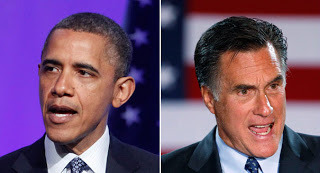 Want an election crystal ball? Take a look at the candidates’ faces. Really? Well, a few years ago, Princeton psychologist Alex Todorov and colleagues, had people glance at hundreds of headshots of rival U.S. congressional and Senate candidates (whom they didn’t recognize) from recent elections. The participants rated how “competent” each candidate looked. Matched with actual election outcomes, the more competent-looking candidate won about 70 percent of the time. Not only that, a face’s “competence” advantage correlated positively with the margin of victory.
Want an election crystal ball? Take a look at the candidates’ faces. Really? Well, a few years ago, Princeton psychologist Alex Todorov and colleagues, had people glance at hundreds of headshots of rival U.S. congressional and Senate candidates (whom they didn’t recognize) from recent elections. The participants rated how “competent” each candidate looked. Matched with actual election outcomes, the more competent-looking candidate won about 70 percent of the time. Not only that, a face’s “competence” advantage correlated positively with the margin of victory.By statistically analyzing the measurements of many faces, Todorov and his team isolated what makes faces look more or less competent. Much of it relates to perceived “facial maturity” and attractiveness, but it’s easier to show than tell how this works. Check out this video from the lab’s websitein which a face that is neutral in competence morphs to highly competent and then to utterly incompetent before returning to neutral:
Todorov’s findings have been repeatedly replicated, controlling for gender, age, race, incumbency, and a few other possible explanations. The results hold when the subjects are from a different country or a different culture than the candidates. They hold when the subjects are children from one country judging the faces of candidates from another. These are true snap judgments. Their correlation with election results doesn’t fade even when glances are as brief as one tenth of a second.
What’s going on? Our brains seem to have specialized neural circuits devoted to face perception. Researchers suggest that humans have a well-honed and automatic response to faces, one deeply rooted in our evolution, helping us read each other’s intentions and tell friend from foe, a particularly important skill back in our cave days.
Into this basic neural machinery, we feed our various cultural stereotypes, a process that University of Toronto psychologist Nicholas Rule calls, “cultural tuning.” In one of Rule’s studies, Japanese and American “voters” saw the same traits in the faces of candidates from each other’s countries. Instead of competence, these subjects judged “warmth” (a mix of likeability and trustworthiness) and “power” (a mix of dominance and facial maturity). Despite agreeing on these traits, however, subjects could only predict the election winners among same-culture candidates. Americans tended to choose the more powerful faces while the Japanese favored those with more warmth.
It’s hard to gauge the accuracy of these competence judgments, of course, because a politician’s actual competence is nearly impossible to objectively measure, especially in the context of a campaign. Ideology is a bit easier to verify. Party affiliation and voting records are good clues. Can we tell whether a candidate will govern to the left or right of the political spectrum just by glancing at his or her face? The answer is debated. Importantly, though, many people think they can, and studies find significant agreement (if not necessarily truth) in face-based guesses about ideology.
In a handful of published studies, subjects are usually just a bit better than chance at guessing party affiliation. Exactly what they are seeing is murky. In Finland and Australia, more attractive candidates were judged to be more conservative. In England, subjects judging the faces of MPs inferred Labor from broad, toothy smiles and round faces, and Conservative from tighter smiles and more angular faces.
One study of American voters found them to be a bit better than chance (averaging 57 percent correct) at guessing the party affiliation of unknown politicians, controlling for gender. To control for age differences, researchers had people look at college yearbook photos of students identified as members of the college Republican or Democrat clubs. In this case, they averaged 62 percent correct. The faces judged as Republican tended to convey more “power” to subjects while those faces identified as Democrats correlated with more “warmth.”
According to a study published in September, looking more Republican than your opponent correlated with a significant increase in the candidate’s vote share in Republican-leaning states (and among Republican voters in hypothetical elections) even if the candidate was actually a Democrat! The researchers, led by Christopher Olivola, a former member of Todorov’s lab and now a research fellow at the University of Warwick (UK), expected to find a similar boost on the Democratic side, but they didn’t. As with previous studies, subjects viewing pairs of photographs were slightly better than chance at guessing political affiliation. Nevertheless, Olivola is skeptical that people really have an ability to accurately read political affiliation in faces beyond the obvious cues (e.g. minorities are more likely Democrats).
By necessity, study participants don’t recognize the politicians they’re judging. In real elections, of course, most people vote along party lines or based on a passion for certain issues. And once they step into the voting booth, most have at least have an inkling about who’s running, and there are no photographs on the ballots (in America at least). This begs the question: Do these biases matter in real elections?
Absent a string of candidates undergoing plastic surgery, the best that researchers can do is isolate correlations. Last year, for instance, MIT political scientists surveyed people who intended to vote in elections contested by candidates whose faces were rated (by others) on their attractiveness and apparent competence. Woven into the survey were questions about TV habits and a sort-of quiz about the federal government and the basics of major issues. They found that uninformed voters (lowest quartile) who also watch a lot of TV (top quartile) seem to be particularly swayed by a candidate’s appearance. Specifically, candidates gained nearly 5 percent of vote share among these folks for every 10 percent increase in how appealing they looked (a mix of competence and attractiveness). How many of these people are leaving the TV long enough to find their way to polling places?
“I have sad news for you,” says Gabriel Lenz, one of the MIT researchers. “It’s probably more common than this survey suggests.” According to the 2008 American National Election Study, for example, 60 percent of eligible voters didn’t know which party controlled the most seats in Congress.
As it happens, researchers have compared Barack Obama and Mitt Romney’s face-based competence. At the outset of the 2008 presidential primaries, when both men were relative unknowns to people outside the U.S., a group of researchers asked New Zealand high-school students to rate the competence of every politician vying for the nomination. On a ten-point scale of competence, Hillary Clinton ranked highest among the Democrats while Obama came in third (6.8). That outpaced the highest-rated Republican, John McCain (6.2) and Romney (6.1).
Of course, the number of voters who know next to nothing about candidates in an election as high profile as the contest for President of the United States shrinks considerably. Looking the part is likely to matter a lot more in the 435 elections for the House of Representatives and, to a lesser extent, the 33 Senate races that will be decided on November 6.
“I think that by the time a candidate gets the presidential nomination from one of the major parties, they must have some basic level of competence,” says Todorov. “There is so much vetting. There are so many gatekeepers. People don’t just get there randomly.”
Published on November 05, 2012 07:20
November 2, 2012
Listen!
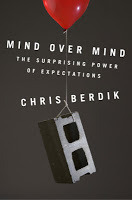
Here are two audio snippets of me reading from Mind Over Mind. The first is from chapter 2 "In The Zone" and lasts about 5 minutes. The second is from chapter 4 "Accounting for Taste" and lasts about 4 minutes.
These audio excerpts were ripped from videos created by multimedia wizard Devin Hahn, who is in the process of creating a video trailer for the book. Thanks, Devin!
Hope you enjoy!
Published on November 02, 2012 09:00
October 31, 2012
Crowdshifting The Vote
I read a fascinating article today in a blog published by Personal Democracy Media called TechPresident about a new persuasion tactic campaigns are using to turn out the vote. It's not the usual stuff boasting about a candidate's record or scaring voters about the opposition's nefarious plans. It's straight-up peer pressure. The letter contains a list of names, including the recipient and several neighbors, noting who voted and who didn't in the most recent elections.
It's all information drawn from public records, and while some people find it creepy, and Big-Brotherish, it seems to work. As the blog notes:
"The academic literature has shown that voters are more likely to participate in elections when you disclose or threaten to disclose their electoral participation, presumably because voting is a social norm or a socially desirable activity and they don't want to be perceived as violating those norms."
When it comes to changing behavior -- whether that's getting people to vote, getting them to cut back on the junk food, or encouraging more savings for retirement -- the pressure of social expectations seem to work when more targeted appeals (be they rational, moral, or emotional) fail. Social psychologists call it "crowdshifting." Everybody else is doing it! Why aren't you?
For example, one recent study found that hotel guests were far more likely to re-use their towels during multi-day visits when the placard announcing the program noted that 75 percent of hotel guests took part, rather than touting the program's environmental benefits. In another study, university students were far more likely to cheat on a test when another test taker (a confederate of the researchers) obviously cheated -- but only when the cheater wore a t-shirt emblazoned with the name of the university where the study took place, rather than a t-shirt bearing the name of the school's bitter cross-town rival.
Want more young people to vote? Bemoaning the dismal turnout among the youngest voters is not the way to go. A 2009 study in the Journal of Politics found that this tactic actually made people less likely to vote. With due respect to the contrarians among us, people are usually far more motivated to be part of a trend than to buck one!
It's all information drawn from public records, and while some people find it creepy, and Big-Brotherish, it seems to work. As the blog notes:
"The academic literature has shown that voters are more likely to participate in elections when you disclose or threaten to disclose their electoral participation, presumably because voting is a social norm or a socially desirable activity and they don't want to be perceived as violating those norms."
When it comes to changing behavior -- whether that's getting people to vote, getting them to cut back on the junk food, or encouraging more savings for retirement -- the pressure of social expectations seem to work when more targeted appeals (be they rational, moral, or emotional) fail. Social psychologists call it "crowdshifting." Everybody else is doing it! Why aren't you?
For example, one recent study found that hotel guests were far more likely to re-use their towels during multi-day visits when the placard announcing the program noted that 75 percent of hotel guests took part, rather than touting the program's environmental benefits. In another study, university students were far more likely to cheat on a test when another test taker (a confederate of the researchers) obviously cheated -- but only when the cheater wore a t-shirt emblazoned with the name of the university where the study took place, rather than a t-shirt bearing the name of the school's bitter cross-town rival.
Want more young people to vote? Bemoaning the dismal turnout among the youngest voters is not the way to go. A 2009 study in the Journal of Politics found that this tactic actually made people less likely to vote. With due respect to the contrarians among us, people are usually far more motivated to be part of a trend than to buck one!
Published on October 31, 2012 12:53



